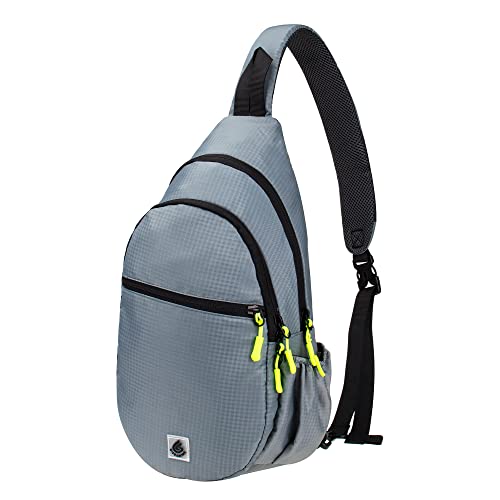Visited with the Kwan.
Had some fun driving up to this, it involved us getting stuck on one hell of a hill, couldnt go forward and couldnt reverse either! after an hour or so of 20 point turns and the most extreme reversing we managed to get to the parking point.
History
Early workings tended to be in surface pits, but as the work progressed downwards, it became necessary to work underground. This was often accompanied by the driving of one or more adits to gain direct access to a Level. In some rare instances, such as here (Moel Fferna), there is no trace of surface workings and the workings were entiely underground.
Moel Frerna has chambers which follow the slate vein, connected via a series of horizontal Floors (or 'Levels'). The chambers vary in size and are divided by 'pillars' or walls which support the roof. The floors are connected by 'Inclines' which used wedge-shaped trolleys to move trucks between levels.
At Moel Fferna a team could produce up to 35 tons of finished slate a week. In 1877 they received about 7 shillings a ton for this. After paying wages for the manager, clerks and 'trammers' the company could make a clear profit of twice this amount. This system was not finally abolished until after the Second World War.
1 view from the spoil heaps
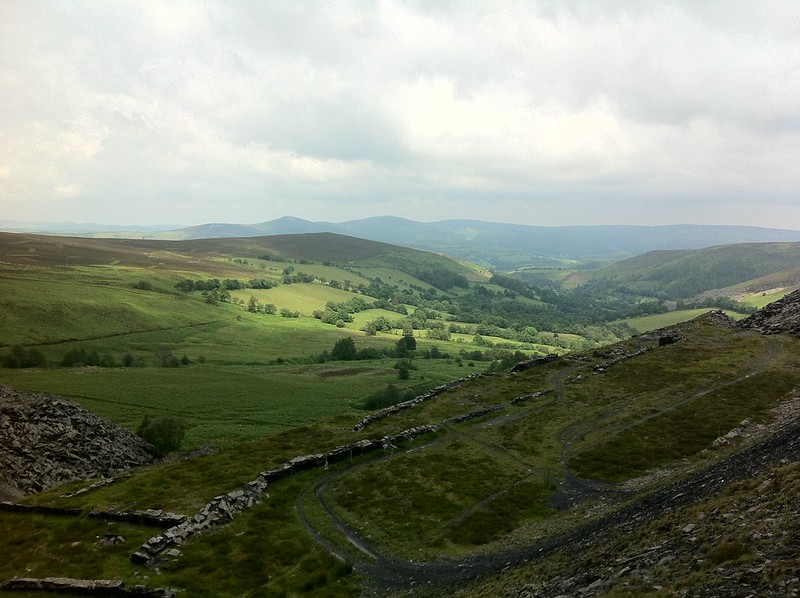
2 down the airshaft we go
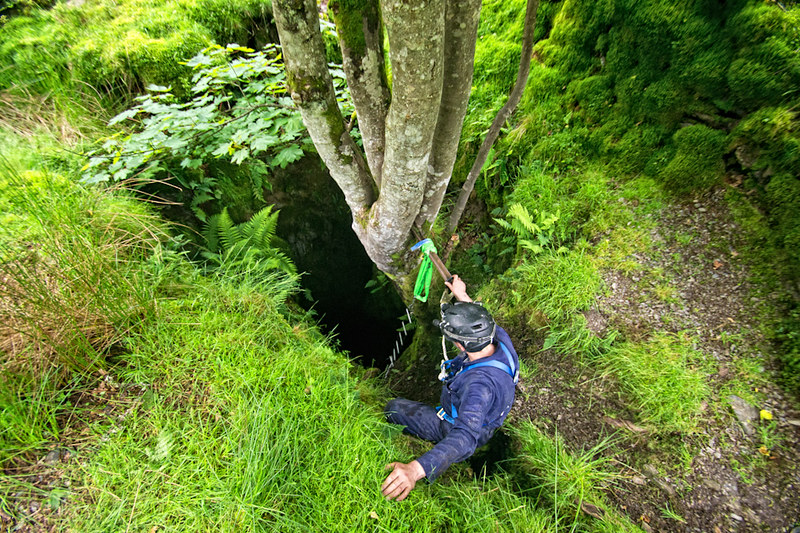
3 approach to main drive
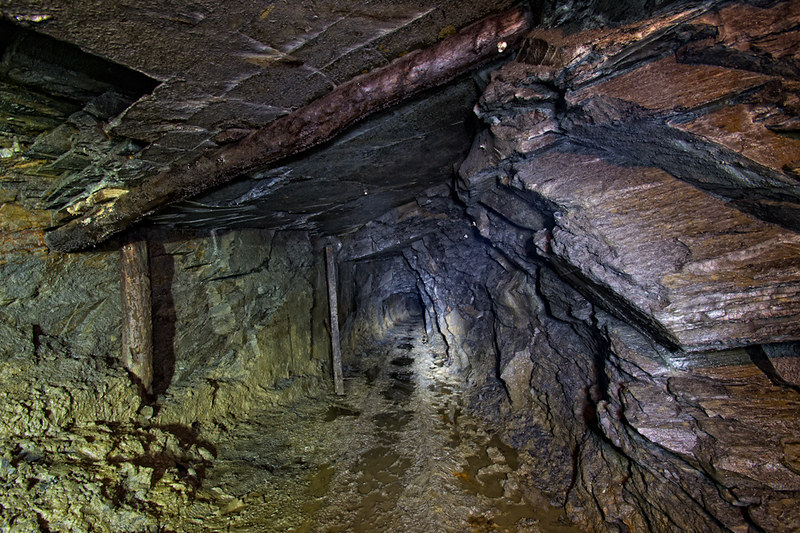
4 graffiti
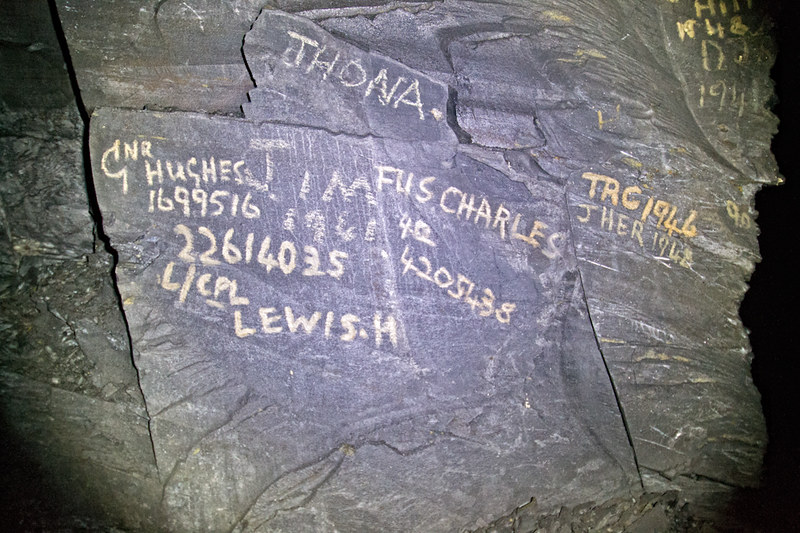
5 chamber, the roof in the mine seemed perfectly flat!
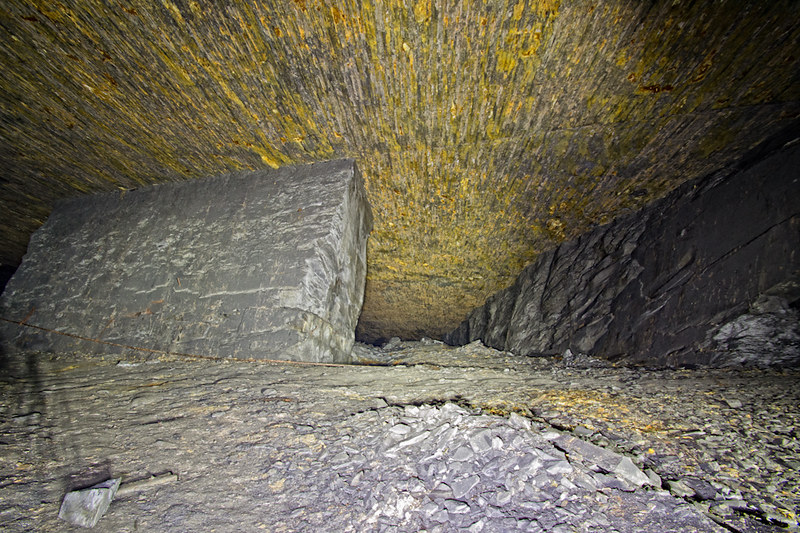
6 the cog
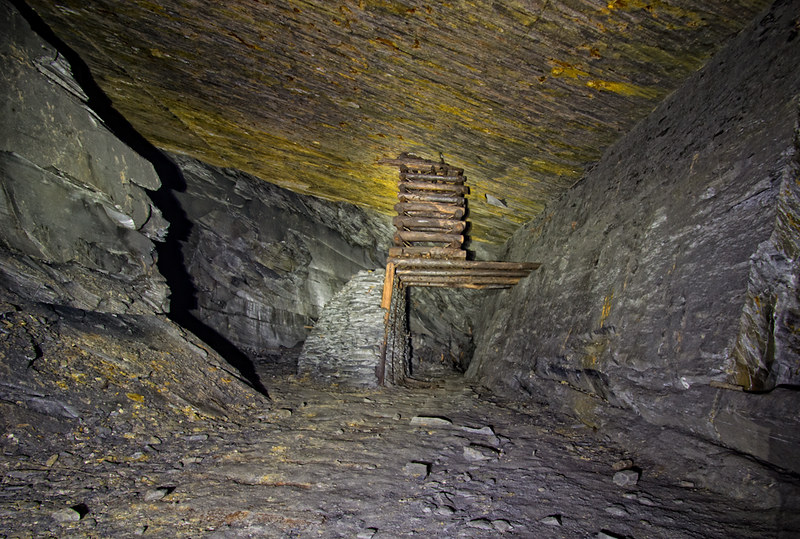
7 Incline
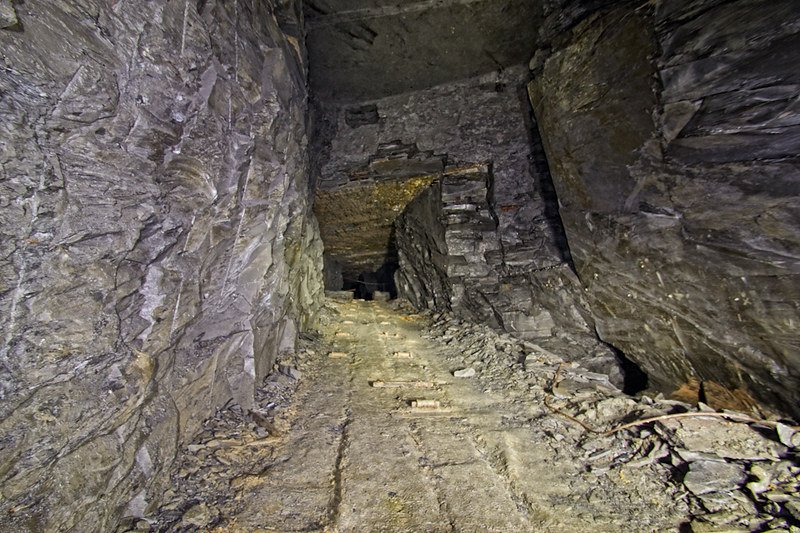
8 Incline top
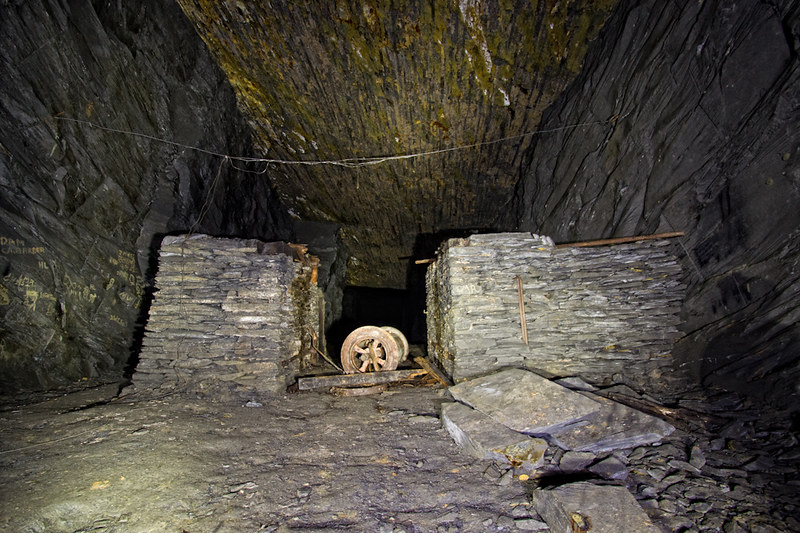
9 Moi, on the bridge of death
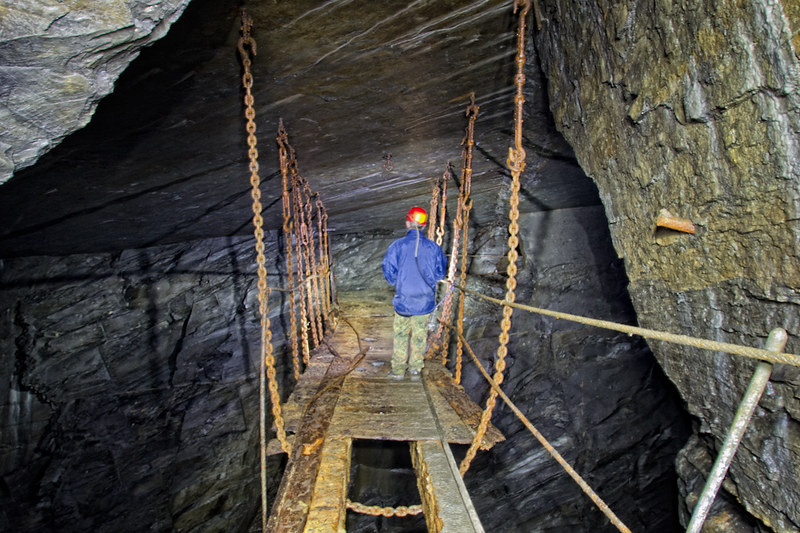
all in all an impressive place, the huge chambers and the black slate make photography a bit difficult! still though one worth visiting.
Had some fun driving up to this, it involved us getting stuck on one hell of a hill, couldnt go forward and couldnt reverse either! after an hour or so of 20 point turns and the most extreme reversing we managed to get to the parking point.
History
Early workings tended to be in surface pits, but as the work progressed downwards, it became necessary to work underground. This was often accompanied by the driving of one or more adits to gain direct access to a Level. In some rare instances, such as here (Moel Fferna), there is no trace of surface workings and the workings were entiely underground.
Moel Frerna has chambers which follow the slate vein, connected via a series of horizontal Floors (or 'Levels'). The chambers vary in size and are divided by 'pillars' or walls which support the roof. The floors are connected by 'Inclines' which used wedge-shaped trolleys to move trucks between levels.
At Moel Fferna a team could produce up to 35 tons of finished slate a week. In 1877 they received about 7 shillings a ton for this. After paying wages for the manager, clerks and 'trammers' the company could make a clear profit of twice this amount. This system was not finally abolished until after the Second World War.
1 view from the spoil heaps

2 down the airshaft we go

3 approach to main drive

4 graffiti

5 chamber, the roof in the mine seemed perfectly flat!

6 the cog

7 Incline

8 Incline top

9 Moi, on the bridge of death

all in all an impressive place, the huge chambers and the black slate make photography a bit difficult! still though one worth visiting.
































